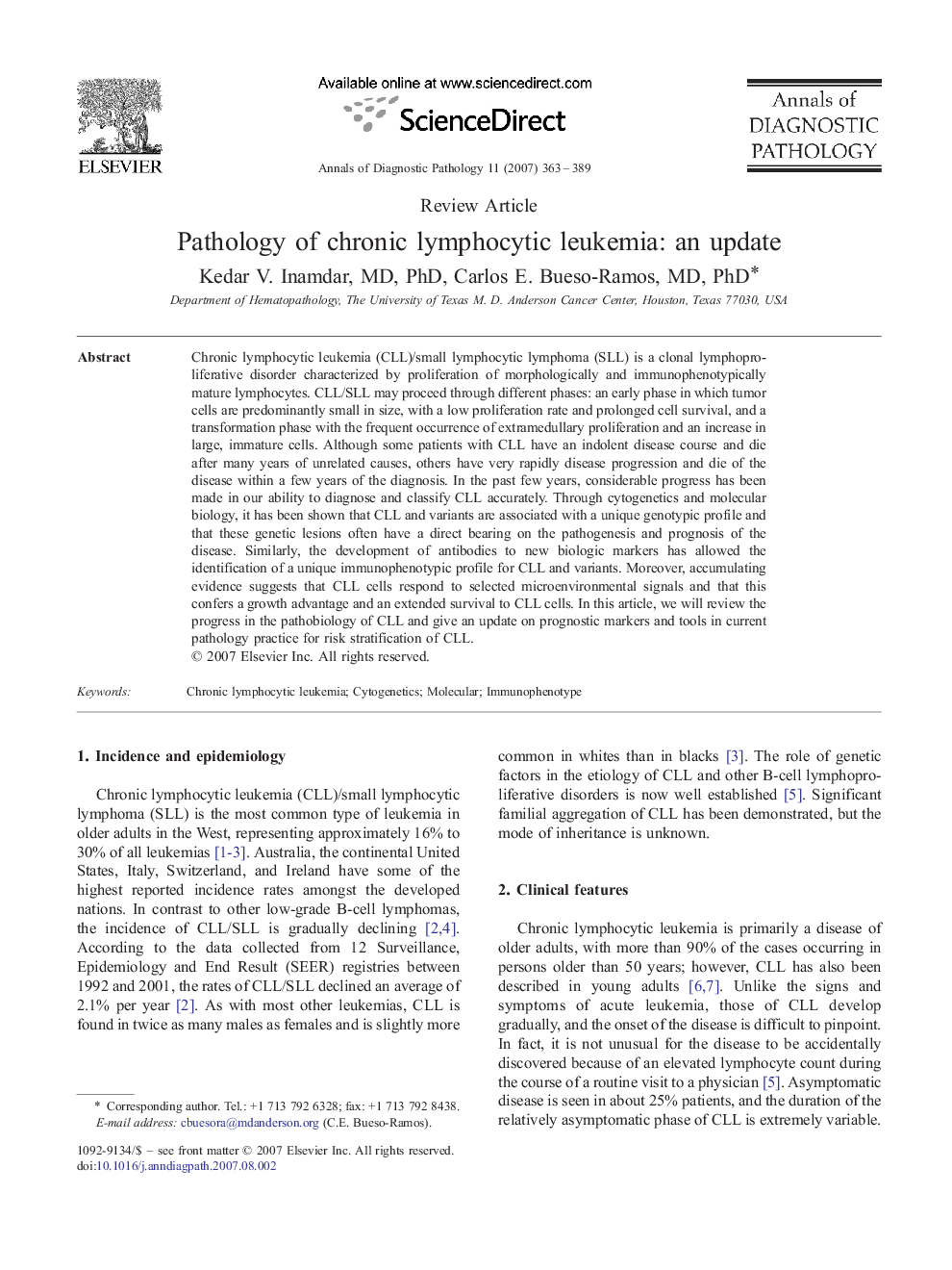| Article ID | Journal | Published Year | Pages | File Type |
|---|---|---|---|---|
| 4130287 | Annals of Diagnostic Pathology | 2007 | 27 Pages |
Chronic lymphocytic leukemia (CLL)/small lymphocytic lymphoma (SLL) is a clonal lymphoproliferative disorder characterized by proliferation of morphologically and immunophenotypically mature lymphocytes. CLL/SLL may proceed through different phases: an early phase in which tumor cells are predominantly small in size, with a low proliferation rate and prolonged cell survival, and a transformation phase with the frequent occurrence of extramedullary proliferation and an increase in large, immature cells. Although some patients with CLL have an indolent disease course and die after many years of unrelated causes, others have very rapidly disease progression and die of the disease within a few years of the diagnosis. In the past few years, considerable progress has been made in our ability to diagnose and classify CLL accurately. Through cytogenetics and molecular biology, it has been shown that CLL and variants are associated with a unique genotypic profile and that these genetic lesions often have a direct bearing on the pathogenesis and prognosis of the disease. Similarly, the development of antibodies to new biologic markers has allowed the identification of a unique immunophenotypic profile for CLL and variants. Moreover, accumulating evidence suggests that CLL cells respond to selected microenvironmental signals and that this confers a growth advantage and an extended survival to CLL cells. In this article, we will review the progress in the pathobiology of CLL and give an update on prognostic markers and tools in current pathology practice for risk stratification of CLL.
